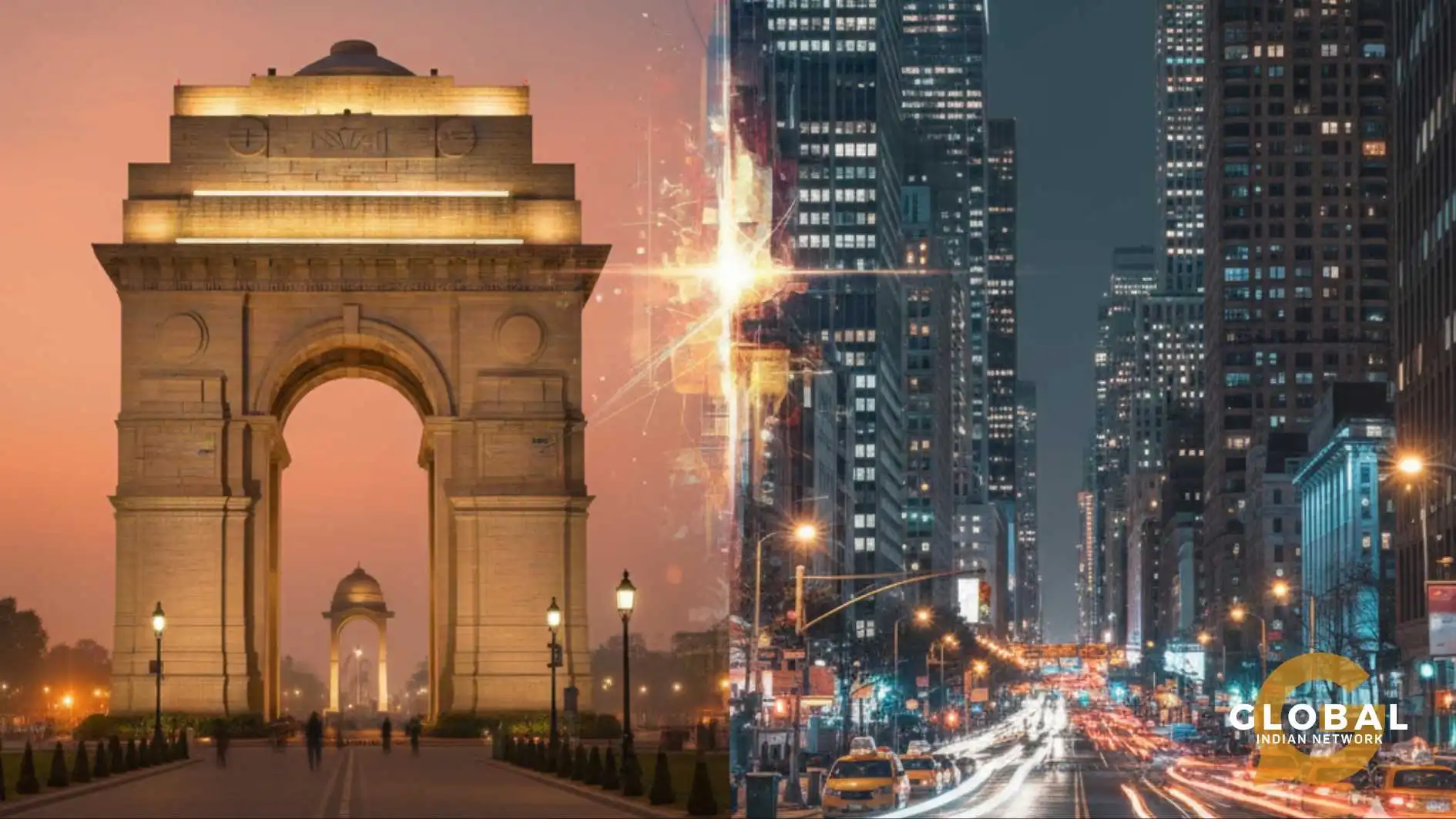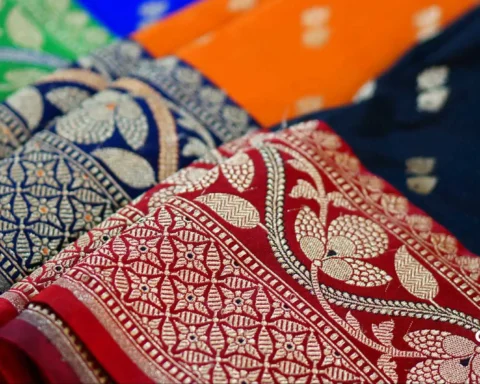At a bustling university café in Boston, a young woman from Chennai discusses climate policy with classmates from five continents. Her accent, once imitated, now commands attention; her ideas are quoted in seminars. Across the world in London, a second-generation Indian filmmaker screens a documentary on migration, her lens capturing both nostalgia for a homeland and pride in her adopted one. A few time zones away, a Gujarati motel owner in Texas unlocks his day’s accounts—a descendant of those who built an empire from a single roadside inn in the 1960s.
These vignettes of Global Indians tell a single, shared story: India travels with its people. Every boarding pass stamped and passport renewed becomes a new chapter in the country’s identity abroad. From Silicon Valley to Sydney, from parliament halls to art studios, these journeys rewrite what “India” means to the world—one life, one success, one story at a time.
The question “Whose India Is It? How Global Indians Shape Narratives About India Abroad” explores how over 35 million Indians living outside the country—spanning Non-Resident Indians (NRIs) and Persons of Indian Origin (PIOs)—influence perceptions, diplomacy, and identity linked to India on the world stage.
What unfolds beyond the curtain is a shared narrative—shaped by Global Indians, domestic voices, and the world’s gaze.
Table of Contents
The Global Indian Identity
The Indian diaspora is one of the largest and most dynamic in the world, encompassing communities ranging from Silicon Valley engineers to political leaders such as Ravi Gurumurthy, Chief Executive of Nesta, in the United Kingdom, and Satya Nadella, Chairman and CEO of Microsoft, in the United States. Global Indians often act as informal ambassadors, representing both modern and traditional aspects of Indian identity in their professional and cultural footprints. Their journeys are not merely tales of migration but evolving stories of influence—how people of Indian origin mediate between East and West, integrating cosmopolitan values while maintaining deep cultural roots.
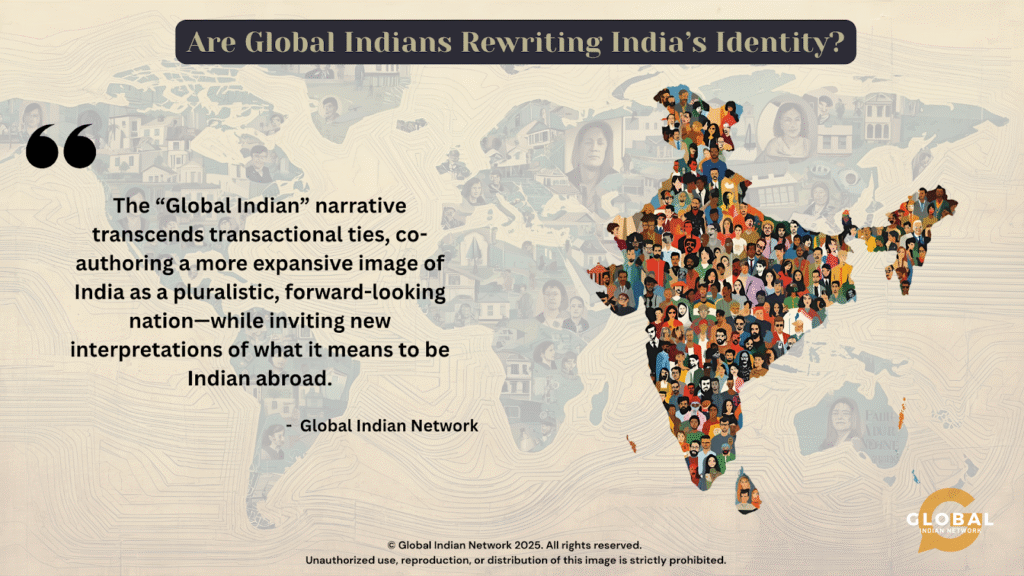
The narrative of a “Global Indian” thus extends beyond remittances or nostalgia—it is about constructing a more inclusive and dynamic image of India as a progressive, pluralistic nation while reinterpreting what “Indianness” means abroad.
Economic Clout and Diplomatic Capital
Economically, the Indian diaspora makes a substantial contribution to India’s soft power and development agenda. In 2024, India received approximately $129 billion in remittances, maintaining its position as the world’s top recipient.
Beyond financial transfers, diaspora entrepreneurs such as Sundar Pichai, Leena Nair, and Indra Nooyi bring global legitimacy to the “India story.” These successes challenge older stereotypes of India as a country defined by poverty and instead project it as a hub of innovation, technology, and leadership.
Leena Nair, CEO, Chanel:
Being a Global Indian means carrying both heritage and ambition. It’s not about choosing between worlds—it’s about building bridges that make both stronger.”
Diaspora networks also act as bridges between India and their host nations, facilitating business relationships and political goodwill. This has been visible in strengthened bilateral relations between India and the U.S., U.K., Canada, and Gulf nations, where Indian-origin professionals occupy influential roles in government and industry. From lobbying for favorable visa policies to championing Indian tech talent, these diaspora-driven efforts convert personal success into geopolitical leverage.

Cultural Diplomacy and Soft Power
India’s cultural exports—yoga, Bollywood, cuisine, and philosophy—benefit enormously from diaspora communities who adapt and present these traditions in hybrid forms suited to global audiences. The United Nations’ recognition of June 21 as International Yoga Day symbolized not only India’s soft power but also the mainstreaming of such practices.
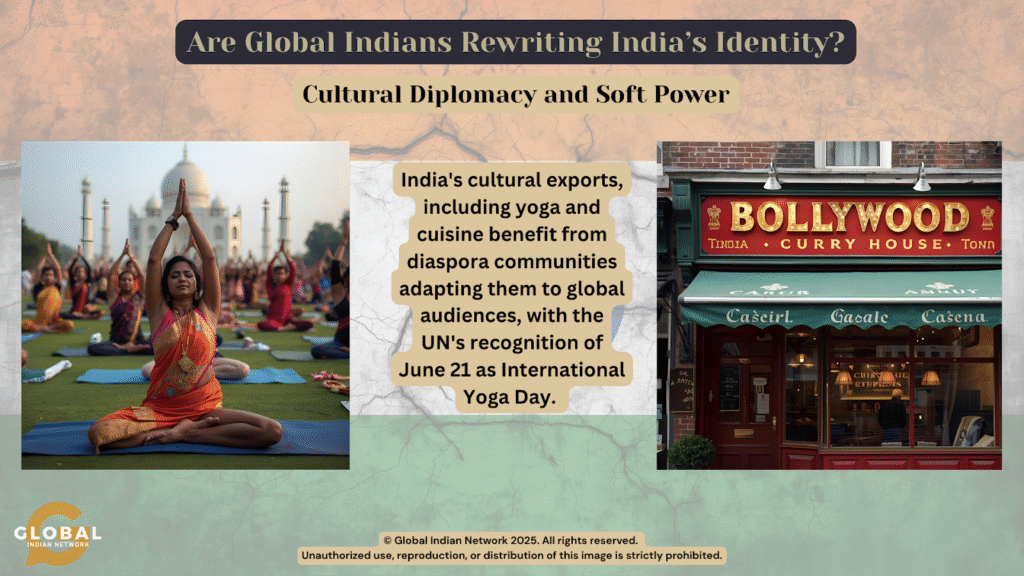
Bollywood studios in Toronto or curry houses in London aren’t simply nostalgic symbols; they represent India’s cultural diplomacy in action, building everyday cross-cultural familiarity that supports a nuanced appreciation of Indian diversity. Such forms of engagement reinforce Shashi Tharoor’s argument that India’s most excellent diplomatic tool is its civilizational appeal rather than military or economic might.
Political and Strategic Dimensions
Diaspora influence in politics also amplifies India’s international voice. Political figures of Indian descent—whether Arvind Krishna of IBM, U.S. lawmaker Pramila Jayapal, or Canada’s Anita Anand—often integrate their heritage into advocacy for multiculturalism, democratic values, and cooperation with India. However, this influence is not uniform or uncontested. Younger generations of the diaspora may challenge or critique India’s domestic policies on issues such as secularism, gender rights, and majoritarianism. These debates define the evolving question: whose India is being represented abroad—the one of aspirational progress or the one grappling with internal contradictions?
At the diplomatic level, India’s Ministry of External Affairs has institutionalized diaspora outreach through Pravasi Bharatiya Divas and the Overseas Citizen of India (OCI) program. These initiatives demonstrate that diaspora engagement is no longer incidental; it has become a cornerstone of India’s global strategy. External Affairs Minister S. Jaishankar frequently underscores diaspora contributions as “a living bridge between India and the world.”
Redefining Indian Soft Power
As scholars like Saumya Kumari and Tilak Raj Sharma argue, the diaspora transforms India’s global image not just by exporting culture but by embodying a value system that blends resilience, innovation, and inclusivity. Indian-origin professionals in media, education, and science—such as Nobel laureate Venki Ramakrishnan or author Jhumpa Lahiri—shape complex, humanized narratives of India as intellectually vibrant and globally integrated.
Prof. Ajay Dubey, Editor-in-Chief, Diaspora Studies Journal, School of International Studies, JNU:
The Indian diaspora is not just a demographic—it’s a strategic asset. Its influence spans diplomacy, development, and cultural projection, making it central to India’s global engagement.”
The Brand Finance Global Soft Power Index (2025) ranked India 30th globally, identifying arts, entertainment, and space exploration as its strongest influence zones. This ascent reflects both government initiatives and grassroots diaspora energy, which together anchor India’s cultural credibility.
Framing the Narrative: Contest and Confluence
Yet, not all narratives converge neatly. Diaspora perspectives often mirror the pluralism—and polarization—of India itself. While affluent professional communities in the West amplify “New India” narratives of growth and digital prowess, other migrant groups highlight human rights, caste equity, and minority protections in India’s global conversation. This tension illustrates that the story of India abroad is multifaceted, simultaneously celebratory and critical.
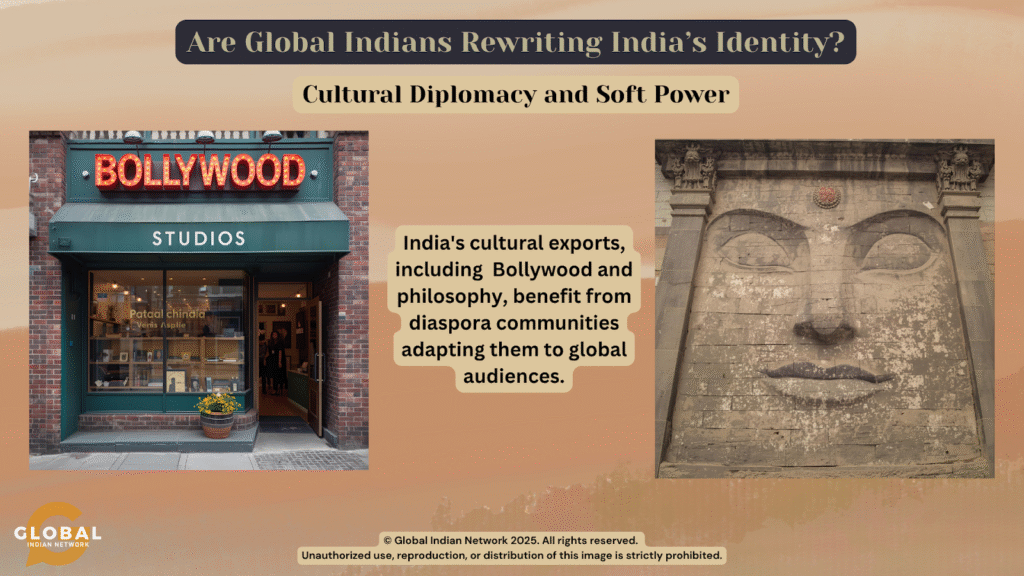
The future challenge for India lies in leveraging this diversity of voices while maintaining coherence in its diplomatic storytelling. As analysts note, polishing India’s image abroad must align with genuine domestic progress in areas like inclusivity and sustainability.

Conclusion
In every corner of the globe, the rhythm of India beats softly—through an entrepreneur in Silicon Valley mentoring startups in Bengaluru, a doctor in Dubai funding schools in Bihar, or a filmmaker in Toronto rediscovering her roots on screen. The diaspora’s story is no longer one of departure but of meaningful return—of ideas, investments, and imagination flowing both ways. As India strides toward becoming a developed economy and a cultural superpower, its global citizens are its strongest mirrors, reflecting not just how far India has come but also how vast its potential remains.
“Whose India is it?” is not a question of ownership but of authorship. Every global Indian—whether a startup founder in California, a filmmaker in London, or a doctor in Nairobi—adds a paragraph to the evolving narrative of India in the world. Together, they redefine India’s identity from a post-colonial state to a confident civilizational democracy projecting both economic and moral influence.
The future of India isn’t confined by geography—it’s written across continents, languages, and generations. Every global Indian carries a spark of that boundless possibility. As they bridge nations and generations, these torchbearers remind the world that the idea of India is not static—it is ever-evolving, inclusive, and endlessly illuminating.
May it light up the world.




